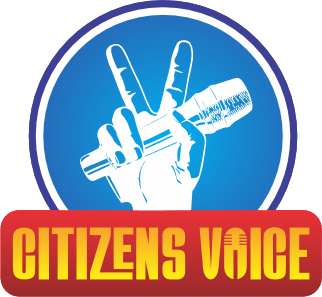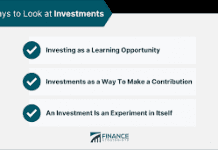
business
http://www.businessesforsale.com/search/startup-Businesses-for-sale Starting a business is a daunting task, but it can be extremely rewarding. There are a few key things you need to keep in mind when starting a business. First, you need to have a clear idea of what your business will be and what its purpose is. Once you have a business plan, you need to find the right location and the right team to help you execute your plan. And finally, you need to make sure you have the right financial backing to get your business off the ground. If you’re thinking about starting a business, http://www.businessesforsale.com/search/startup-Businesses-for-sale is a great place to start your search. This website is a directory of businesses for sale, so you can browse through and find the right business for you. Take your time and do your research to find the perfect business for you and your lifestyle.
- Decide on your niche
- Do your research
- Create a business plan
- Find funding
- Get started
- Keep going
- Grow your business
1. The definition of business according to Merriam-Webster is “the activity of making one’s living by engaging in commerce.” 2. There are many types of businesses, including sole partnerships, corporations, and limited liability companies. 3. The most important part of starting a business is having a good idea. 4. Once you have a good idea, you need to determine what legal structure your business will take. 5. You then need to obtain the necessary licenses and permits. 6. After that, you need to find the right location and start marketing your product or service. 7. Finally, you need to keep track of your finances and make sure your business is profitable.
1. The definition of business according to Merriam-Webster is “the activity of making one’s living by engaging in commerce.”
The definition of business according to Merriam-Webster is “the activity of making one’s living by engaging in commerce.” This definition seems overly simple, but it does capture the essence of what business is: the activity of making money through trade. Of course, there is more to business than just making money. Businesses also have to produce goods or services that people want or need. And they have to do all of this in a way that is efficient and profitable. But at its core, business is about making money. It is an activity that is essential to our economy and our way of life. Without businesses, there would be no trade, no commerce, and no money. We would all be living in a very different world.
2. There are many types of businesses, including sole proprietorships, partnerships, corporations, and limited liability companies.
There are many types of businesses, including sole , partnerships, corporations, and limited liability companies. Each type of business has its own advantages and disadvantages. Sole proprietorship are the simplest and most common type of business. They are owned and operated by one person, and the owner has complete control over the business. sole proprietorship are relatively easy and inexpensive to set up, and they offer the owner complete control over the business. However, sole proprietorship are also unlimited liability businesses, which means that the owner is personally responsible for all debts and liabilities of the business. Partnerships are similar to sole proprietorships, but they are owned and operated by two or more people. Partnerships offer the same advantages as sole proprietorships, but with the added benefit of shared responsibility and shared profits. However, partnerships also have unlimited liability, which means that each partner is personally responsible for the debts and liabilities of the business. Corporations are larger and more complex than sole proprietorships and partnerships. They are owned by shareholders, and the business is managed by a board of directors. Corporations offer the benefit of limited liability, which means that the shareholders are not personally responsible for the debts and liabilities of the business. However, corporations are subject to more regulations than sole proprietorship and partnerships, and they are also more expensive to set up. Limited liability companies are a hybrid of corporations and partnerships. They are owned by shareholders, but the business is managed by a board of directors. Limited liability companies offer the benefit of limited liability, like corporations, but they are not subject to as many regulations. Limited liability companies are also less expensive to set up than corporations.
3. The most important part of starting a business is having a good idea.
Starting a business can be a daunting task, but the most important part is having a good idea. Many people think that the hardest part of starting a business is the initial investment or the paperwork, but it’s actually coming up with a clever and innovative idea. The best way to come up with a good business idea is to think about what you’re passionate about and what needs are not being met in the marketplace. For example, if you’re passionate about fashion, you could start a clothing line or a styling service. If you’re passionate about food, you could start a catering business or a healthy meal delivery service. Once you’ve identified your passion, research the market to see if there’s a need for your product or service. If there’s already a lot of competition, you’ll need to be extra creative and innovative to stand out. But if there’s a gap in the market, you have a great opportunity to succeed. Once you’ve identified a need in the market, it’s time to start putting your business idea together. This part can be tricky, but it’s important to think about the details of your business, such as what your product or service will be, how you’ll make money, and how you’ll reach your target market. If you can put together a well-thought-out business plan, the rest of the process of starting your business will be much easier. And if you have a great business idea, your chances of success will be much higher. So if you’re feeling motivated to start a business, remember to focus on coming up with a good idea first.
4. Once you have a good idea, you need to determine what legal structure your business will take.
There are several things to consider when deciding what legal structure to give your business. The first is what type of business you will be running. Corporation, sole proprietorship, partnership, or LLC? Each has their own benefits and drawbacks that you will need to research in order to make the best decision for your business. The second thing to consider is what your business goals are. What do you hope to achieve by starting your own business? Are you looking to make a lot of money, or are you more interested in having a successful and sustainable business? Your answer to this question will help guide you to the right legal structure for your business. The third factor to consider is what sort of liability you are willing to take on. This will be determined by the type of business you are running and the amount of risk you are willing to take on. If you are running a high-risk business, you may want to consider incorporating in order to protect your personal assets. Once you have decided on the legal structure of your business, you will need to obtain the necessary licenses and permits. This will vary depending on the type of business you are running and the location in which you will be operating. Once you have all of the necessary licenses and permits, you will be ready to start your business!
5. You then need to obtain the necessary licenses and permits.
If you want to start a business, there are a few things you’ll need to do first. You’ll need to choose a business structure and obtain the necessary licenses and permits. The first step is to choose a business structure. There are four main business structures in the United States: sole proprietorship, partnership, corporation, and limited liability company (LLC). Each has its own pros and cons, so you’ll need to decide which one is right for your business. Once you’ve chosen a business structure, you’ll need to obtain the necessary licenses and permits. The requirements vary depending on your business type and location, but you’ll likely need to obtain a business license, a tax permit, and any licenses or permits required by your state or local government. Starting a business can be a lot of work, but it’s worth it if you’re passionate about your idea. With the right planning and execution, you can turn your dream into a reality.
6. After that, you need to find the right location and start marketing your product or service.
After you have created your product or service and have chosen your business model, you need to find the right location for your business. The perfect location depends on the needs of your business, but there are a few things to keep in mind when searching for a location for your business. The first thing to consider is the type of business you are running. If you are a retail business, you will want to be located in an area with high foot traffic. If you are a service-based business, you will want to be located in an area that is convenient for your customers. You will also want to consider the competition in the area when choosing a location for your business. Once you have chosen a location for your business, you need to start marketing your product or service. The best way to market your business is to start by creating a website and social media accounts. You can also market your business by word-of-mouth, flyers, and business cards. The most important thing is to get the word out about your business so that potential customers can find you.
7. Finally, you need to keep track of your finances and make sure your business is profitable.
As a business owner, you need to keep track of your finances and make sure your business is profitable. This means knowing your expenses, income, and profit margins. There are a few key financial metrics that you should track on a regular basis. First, you need to track your revenue and expenses. This will give you an overview of how much money your business is bringing in and where your money is going. You should also track your profit margins. This is the difference between your revenue and your expenses. To calculate your profit margin, simply divide your revenue by your expenses. Finally, you need to track your cash flow. This is the money that is coming in and out of your business. To track your cash flow, you need to track your income and expenses and then subtract your expenses from your income. By tracking these key financial metrics, you can ensure that your business is profitable and running smoothly.
Business is a critical part of our society and economy, and it is important to understand how businesses operate. Businesses must provide goods or services that people are willing to pay for, and they must generate enough revenue to cover their costs and make a profit. To be successful, businesses must be able to adapt to changes in the marketplace and find new opportunities for growth.






